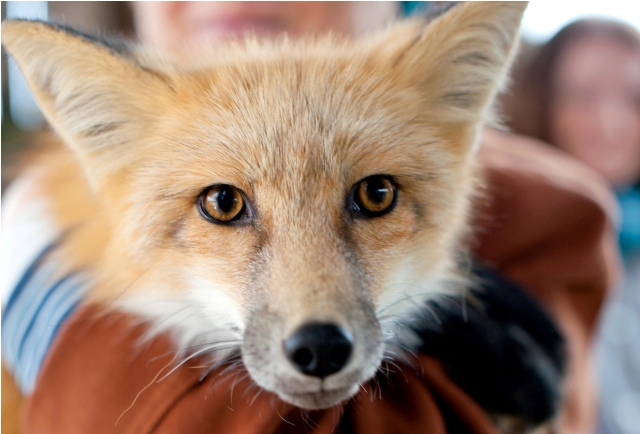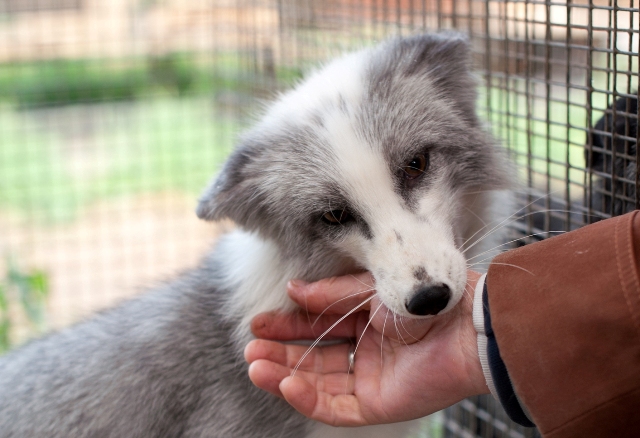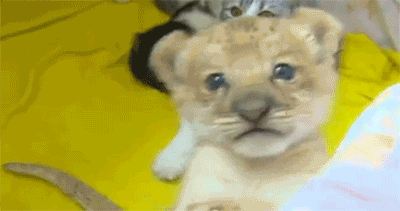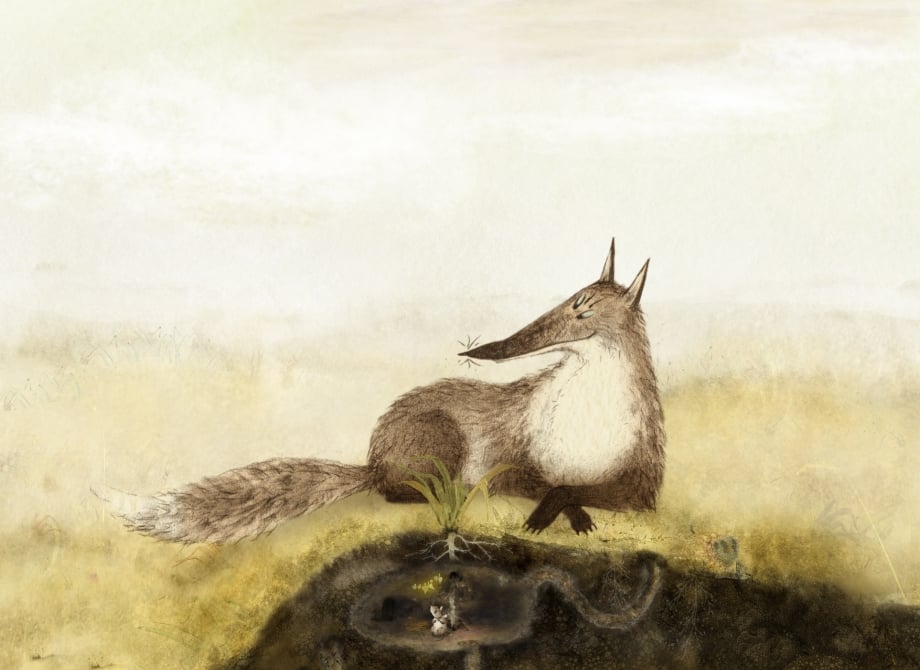Fantastic Mr Fox: science, ideology and cute designer pets

Novosibirsk is home to the world's only tame foxes. Olga Shvarova delves into the history and the science behind the latest global pet craze
If you like cute, fluffy animals and have £5,000 to spare, you can now buy a pet Siberian silver fox. And don’t worry, these foxes are properly tame: they use litter trays, love being brushed and even get along with cats and dogs. There are now so many people in the US, Netherlands and Germany who want, and can afford, to live with a fox, that you can place an order online to get an eight-week old cub delivered.
But why, or how, would anyone breed a tame fox? The programme was started in 1948 by Dmitry Belyaev, a biologist and former head of the Department of Fur Animal Breeding in Moscow. The dominant paradigm in Soviet biology at the time was the doctrine now known as Lysenkoism. Quack scientist Trofim Lysenko had become famous by proposing the “innovative” yield-boosting technique of storing winter crops though the cold months, cooling them down and then sowing in spring. Lysenko’s bogus theories quickly became official policy: his advocacy for the Lamarckian theory of the inheritance of developed traits fitted neatly with Stalin’s political interests, and he was happy to advance his career by giving politically compliant speeches and slandering his academic opponents, who were mostly geneticists. Ultimately, genetics was outlawed as an “anti-Soviet-pseudoscience” in 1933; most people working in the field were dismissed from their posts, and, by 1938, sent to labour camps.
Siberian foxes making perfect pets in the US
Despite this repression, some scientists continued to pursue their interests under a suitable disguise. Such was the case with Belyaev, who lost his job and had to leave Moscow but who was fortunate enough to avoid the camps and to manage to continue his genetics research in Novosibirsk, pretending it was an investigation into animal psychology.
“A fox that is not just tame, but smart too — much smarter than its wild cousins”
This study turned into a 50-year experiment at what became the Institute of Cytology and Genetics. Belyaev chose to work with foxes because he was particularly interested in the way wild animals are transformed by domestication; he believed that tolerance of humans was the key, and that this behaviour was genetic. Sequencing the genome was, of course, technologically impossible at that time. But reproducing the evolutionary process through selective breeding seemed to be an achievable, though lengthy, experiment. Mating pairs were chosen for lack of fear or aggressive behaviour and after 40 generations, physiological, hormonal and neurochemical changes became apparent in cubs. The result is a genetically tame, blue-eyed, patchwork-coated, dog-like fox that wags its tail, barks when excited and enjoys human company. These foxes look and behave very much like Border Collies, and, remarkably, follow human social cues like pointing and eye movements. Selecting against fear and aggression has created a fox that is not just tame, but smart too — much smarter than its wild cousins.
“With the Humanzee experiment, Ivanov tried to create a human/ape hybrid”
The taming of the Siberian foxes was the first successful Soviet attempt to create something like a new species, but not the only one. Another, less well known, and somewhat more sinister, was the the mid-1920s Humanzee experiment, in which biologist Ilya Ivanov tried to create a human/ape hybrid. He started with his own sperm and a few chimpanzee females but none of his attempts resulted in a pregnancy. In 1929 he designed another set of experiments, this time involving ape sperm and human female volunteers, but was delayed considerably by the lack of animal subjects. Shortly afterwards Lysenko began his war on genetics and the experiments were stopped entirely. Ivanov, like most of his colleagues, was sent to the Gulag, where he died.
Nevertheless his research has lived on in art. In 1932 Dmitry Shostakovich wrote a comic opera, Orango, about a human/ape hybrid. After being suppressed by the authorities for decades it was recently rediscovered and staged for the first time in 2011. Hybridisation is also central to Mikhail Bulgakov’s Heart of the Dog (1925), which tells of a misguided attempt to use transplants to transform an animal into a human. Bulgakov’s satirical novel, which also references the infamous monkey gland experiments of Serge Voronoff draws the reader’s attention to eugenics, the dark side of genetics.

Early Soviet geneticists’ obsession with creating chimeras originates, I think, in the influence of the Marxist philosophy on which the state ideology was largely based. For Marx, mankind’s dominance over plants and animals was probably the most significant aspect of human existence: humans act upon the world, changing it and creating history. Thus historical progress depends on humanity extending our abilities to shape and control everything around us; it is the most profound expression of human nature. The later, Leninist development of historical materialism reinforced this idea, and was directly responsible for a number of insane Soviet projects, such as reversing the course of Siberian rivers to irrigate Central Asia (fortunately never realised). Research into selective breeding, like the Humanzee experiment and the tame foxes, was a direct consequence of the ideological influence of an institutionalised philosophical system.
“Deep-seated fear of genetic experiments still remains strong in Russians’ psyche”
But the fox farm outlived the Soviet Union and its Marxist ideology. Despite successful repeat experiments with rats and mink, funding gradually dried up in the 1990s. So in the recent years the Institute has started to sell tame fox cubs as pets in order to raise money. There seems to be little interest in this historic project from Russian funding bodies, but there could well be more to the fox experiment than a source of cute new pets. The Institute is collaborating with a molecular genetics group at Cornell University to identify the “tameness” gene; scientists at the Max Planck Institute for Evolutionary Anthropology in Leipzig are also looking into the genetic code in Belyaev’s tame rats. Identifying the underlying mechanisms that define social behaviour in mammals could provide an insight into the genome types responsible for social reciprocity in humans, which would help us understand human neurological disorders such as autism or Williams syndrome.
The reluctance of Russian research councils is baffling. Maybe the reason is the deep-seated fear of genetic experiments which still remains strong in Russians’ psyche, as a result of cultural echoes of the geneticists’ trials and the consequent urban myths about “harmful” research carried out by “enemies of the people”. The fear of chimeras still recurs in Russian literature and film with remarkable persistence. The three protagonists of Ilya Khrzhanovsky’s award-winning 2005 feature film 4, based on a screenplay by novelist Vladimir Sorokin, discover that they live in a society where pigs, dogs and humans (and who knows what else) have been secretly cloned nationwide since 1945.

Many more orders for tame fox cubs come from abroad than from inside Russia — the ideology has been forgotten and the science is largely ignored, but superstition and mythology remain lodged in the collective memory. The fox farm was Russia’s last selective breeding experiment. Even the famous liliger, the world’s first liger/lion hybrid, born in Novosibirsk Zoo in 2012, was an accident. Her mother, a liger (lion/tiger cross) named Zita, was thought to be sterile when she was put in a male lion’s cage to keep him company. The offspring, Kiara, a cute cub the size of a domestic cat, was put in the care of zoo employees, and went on to charm internet users around the world. Perhaps she has the power to change the public fear of genetic modification; unless, of course, she eats her adoptive family for breakfast one day.

